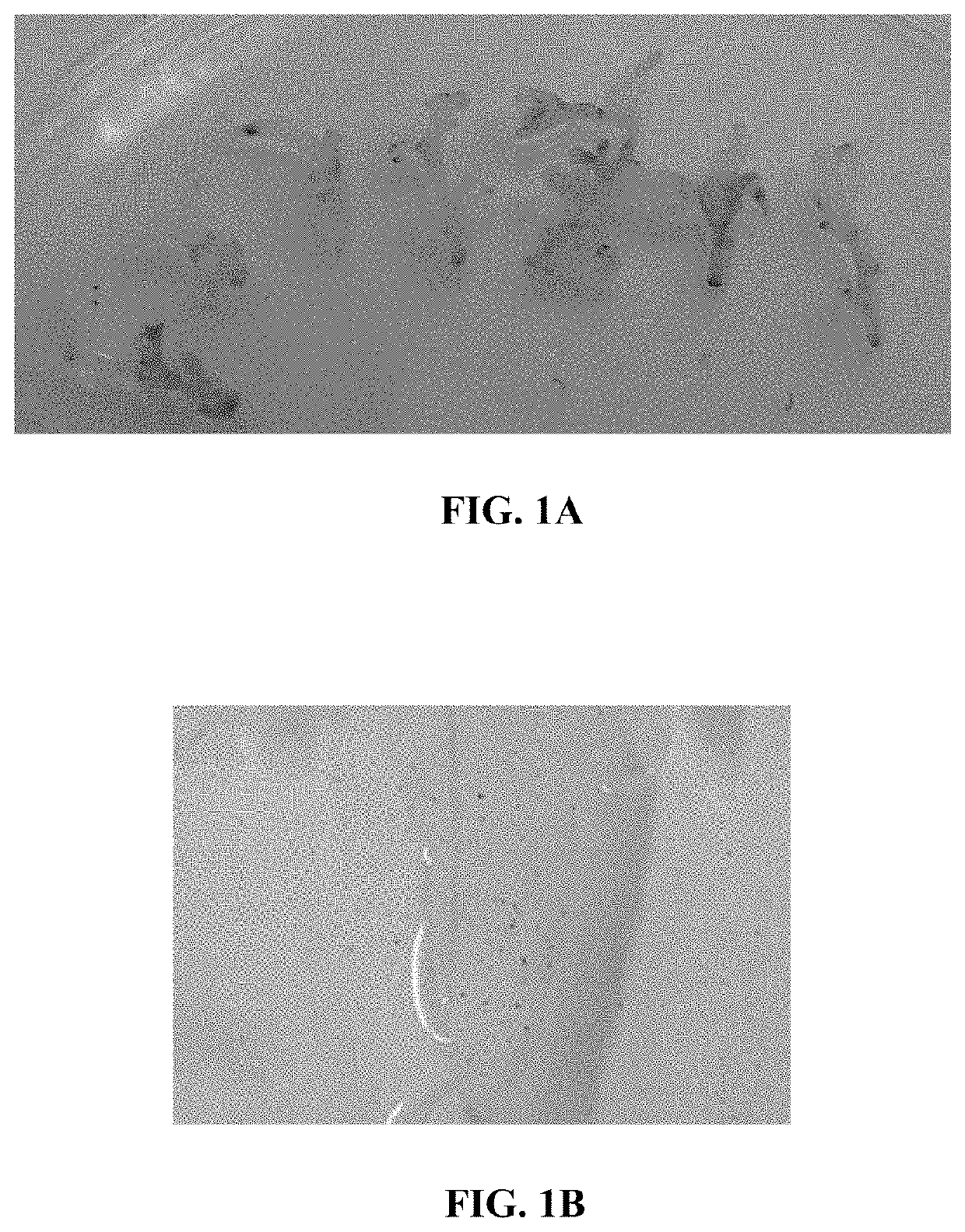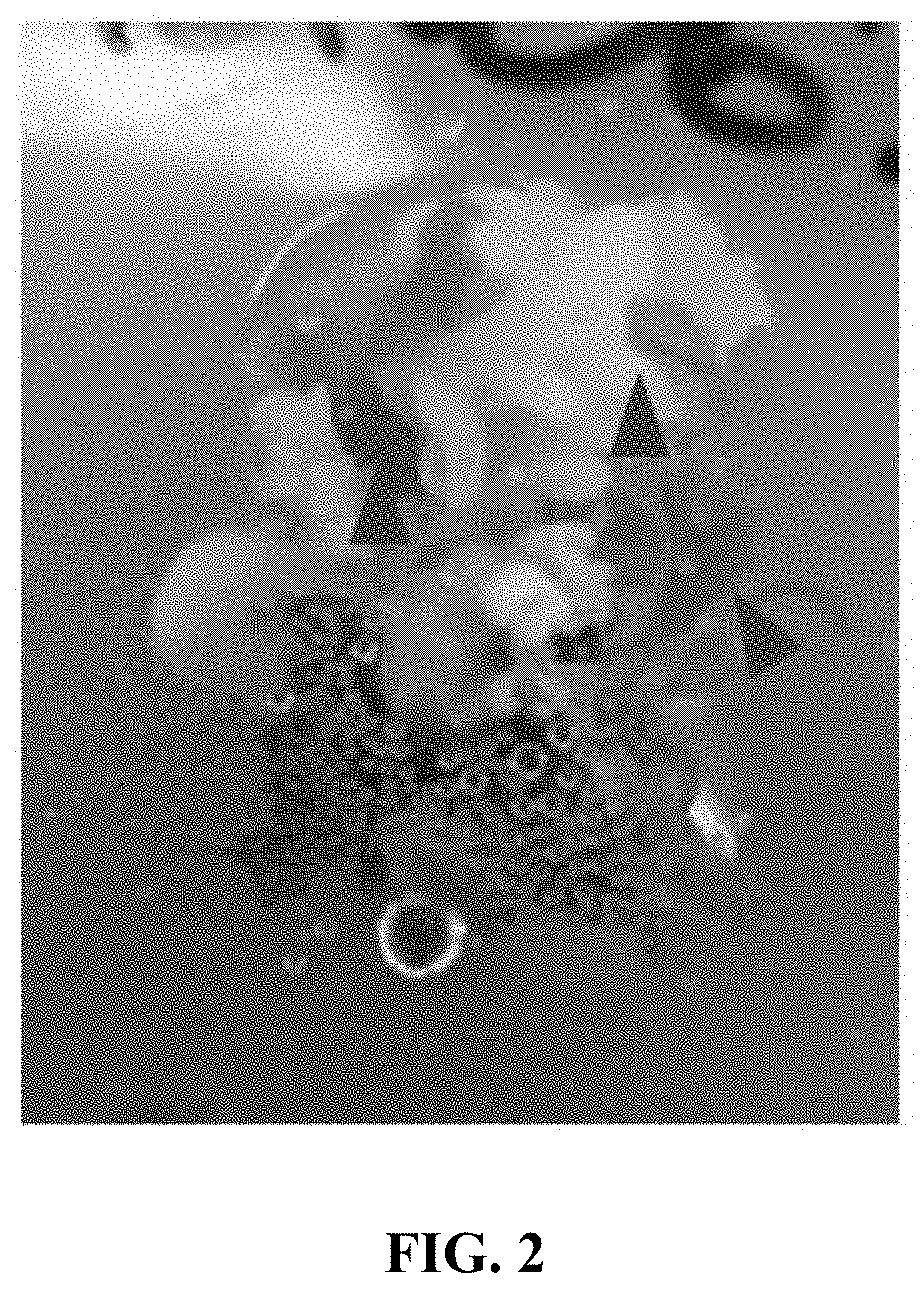Cannabis plants with improved yield
a cannabis plant and yield technology, applied in the direction of peptide sources, bio chemistry apparatus and processes, etc., can solve the problems of reduced total yield of engineered tomato plants, limited if any molecular tools supporting or leading the breeding process, and the stop of breeding
- Summary
- Abstract
- Description
- Claims
- Application Information
AI Technical Summary
Benefits of technology
Problems solved by technology
Method used
Image
Examples
example 1
[0279]Production of Cannabis plants with improved domestication traits by targeted genome editing
[0280]This example describes a generalized scheme of the process for generating the genome edited Cannabis plants of the present invention, The process comprises the following steps:[0281]1. Designing and synthesizing gRNA's corresponding to a sequence targeted for editing. Editing event should be designed flanking with a unique restriction site sequence to allow easier screening of successful editing.[0282]2. Carrying transformation using Agrobactedum or biolistics. For Agrobacterium and bioloistics transformation using a DNA plasmid, a vector containing a selection marker, Cas9 gene and relevant gRNA's is constructed. For biolistics using Ribonucleoprotein (RNP) complexes, RNP complexes are created by mixing the Cas9 protein with relevant gRNA's.[0283]3. Performing regeneration in tissue culture. For DNA transformation, using antibiotics for selection of positive transformants.[0284]4....
example 2
[0352]Production of mutated Cssp-1 gene alleles by genome editing events
[0353]This example presents the production of new editing events within CsSP-1 gene.
[0354]Three single guide RNAs (sgRNA) targeting selected regions within the genomic sequence of CsSP-1 gene were designed and synthesized. These gRNAs include gRNA having nucleotide sequence as set forth in SEQ ID NO: 102 (first guide), SEQ ID NO: 109 (second guide) and SEQ ID NO: 112 (third guide), starting at position 3291, 3260 and 3167 of SEQ ID NO: 1 (WT CsSP-1 genomic sequence), respectively. The predicted Cas9 cleavage sites directed by these guide RNAs were designed to overlap with the nucleic acid recognition site of the restriction enzymes BsaXI, XapI and RseI for the first, second and third guide, respectively (see Tables 9-12). Transformation was performed using a DNA plasmid such as a plant codon optimized Streptococcus pyogenes Cas9 (pcoSpCas9) plasmid. The plasmid contained the plant codon optimized SpCas9 and the ...
PUM
 Login to View More
Login to View More Abstract
Description
Claims
Application Information
 Login to View More
Login to View More - R&D
- Intellectual Property
- Life Sciences
- Materials
- Tech Scout
- Unparalleled Data Quality
- Higher Quality Content
- 60% Fewer Hallucinations
Browse by: Latest US Patents, China's latest patents, Technical Efficacy Thesaurus, Application Domain, Technology Topic, Popular Technical Reports.
© 2025 PatSnap. All rights reserved.Legal|Privacy policy|Modern Slavery Act Transparency Statement|Sitemap|About US| Contact US: help@patsnap.com



